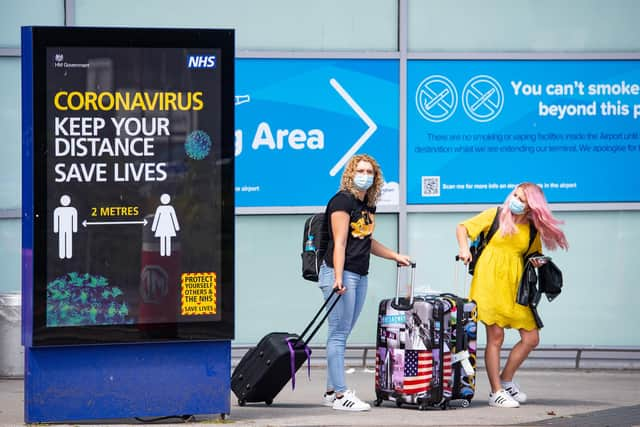Covid-19: how high have infections risen in Birmingham, Solihull and Sandwell?
This article contains affiliate links. We may earn a small commission on items purchased through this article, but that does not affect our editorial judgement.
and live on Freeview channel 276
Coronavirus infection levels have continued to climb in all regions and nations of the UK, figures show,
The latest ONS Covid survey shows the estimated number of people with Covid had risen to one in 17 in Scotland, one in 19 in Northern Ireland, one in 20 in Wales and one in 25 in England.
Advertisement
Hide AdAdvertisement
Hide AdA total of 2.7 million people are estimated to have had the virus last week, the latest monitoring reveals. This is up 18% from the 2.3 million cases in the previous week, marking the highest estimate for total infections since late April.
However, infection levels are still below the record high of 4.9 million which was reached at the end of March. Separate NHS data shows hospitalisations also continue to climb. The rise is due to the Omicron variants BA4 and BA5.
The figures are based on regular, large-scale testing of a sample of private households across all parts of the UK.


What do the figures show for Birmingham, Solihull and Sandwell?
In Birmingham, 1 in 25 (4.3%) people tested positive for the virus in the week ending June 29 - a 26% increase on th week before.
Advertisement
Hide AdAdvertisement
Hide AdIn Solihull, 1 in 25 (4.1%) people tested positive for Covid-19 in the week ending June 29. This was 8% increase on the week before.
And in Sandwell, 1 in 30 (3.5%) of people tested positive for Covid in the week ending June 2, which was a 7% increase on the week before.
What about the rest of the UK?
The UK’s highest Covid infection rates were in a swathe of central Scotland which encompasses Dundee, Fife and Falkirk. An estimated one in 16 people had Covid across the council areas of Dundee City, Clackmannanshire, Falkirk, Stirling, Angus, Fife and Perth and Kinross
Edinburgh and the Lothians came second. One in 16 people were thought to be positive for Covid across the council areas of East Lothian, Midlothian, City of Edinburgh and West Lothian.
Advertisement
Hide AdAdvertisement
Hide AdCardiff and the Vale of Glamorgan has the highest rate in England and Wales, where one in 19 people had Covid, ONS estimates say. Plymouth and nearby areas of Devon had England’s highest Covid rates. One in 19 people had Covid in the council areas of Plymouth, Torbay and South Hams.
What’s been said about the rise in infections?
Dr Mary Ramsay, Director of Clinical Programmes at the UK Health Security Agency (UKHSA), said: “We continue to see COVID-19 case rates and hospitalisations rise in all age groups, with the largest increases in hospitalisations and ICU admissions in those aged 75 and older.
“There is likely to be a substantial amount of waning immunity in older people who have not taken up the booster on schedule, so we can expect these rises to continue over the coming weeks and throughout July.”
A message from the editor:
Thank you for reading. BirminghamWorld is Birmingham’s latest news website, championing everything that is great about our city - reporting on news, lifestyle and sport. We want to start a community among our readers, so please follow us on Facebook,Twitter and Instagram, and keep the conversation going.
Comment Guidelines
National World encourages reader discussion on our stories. User feedback, insights and back-and-forth exchanges add a rich layer of context to reporting. Please review our Community Guidelines before commenting.
